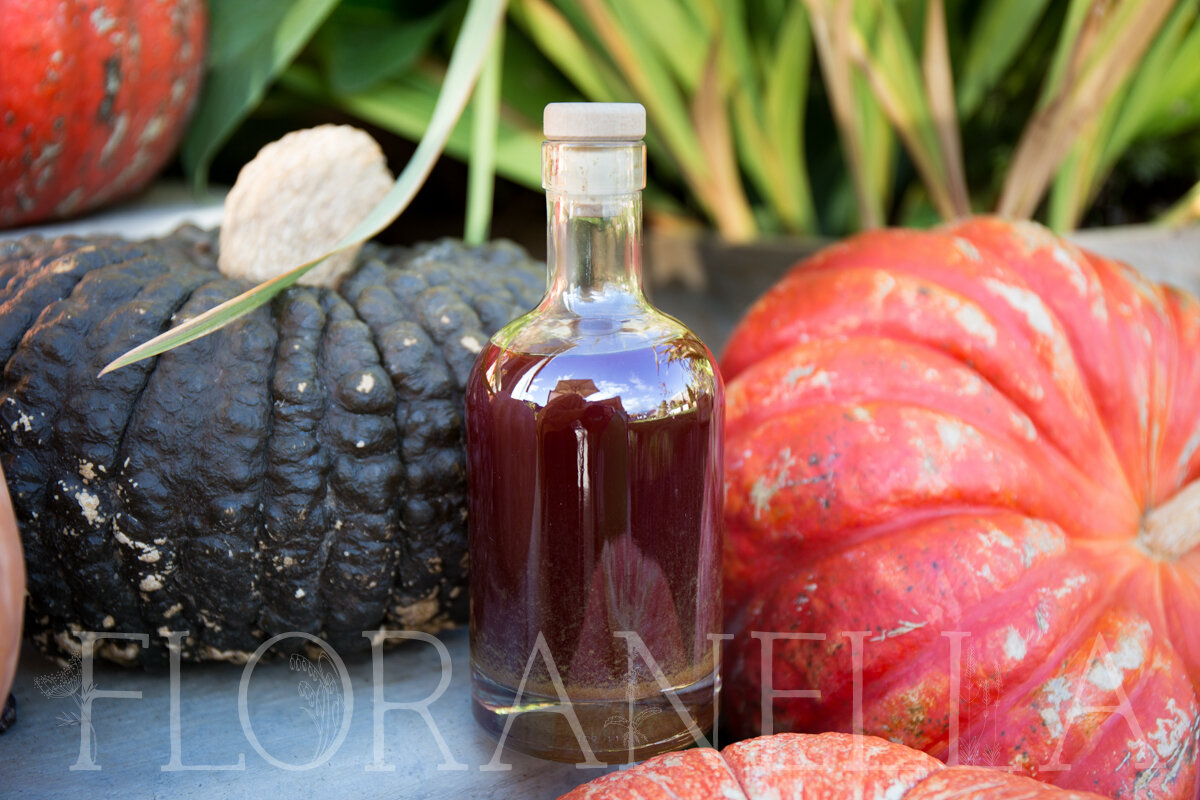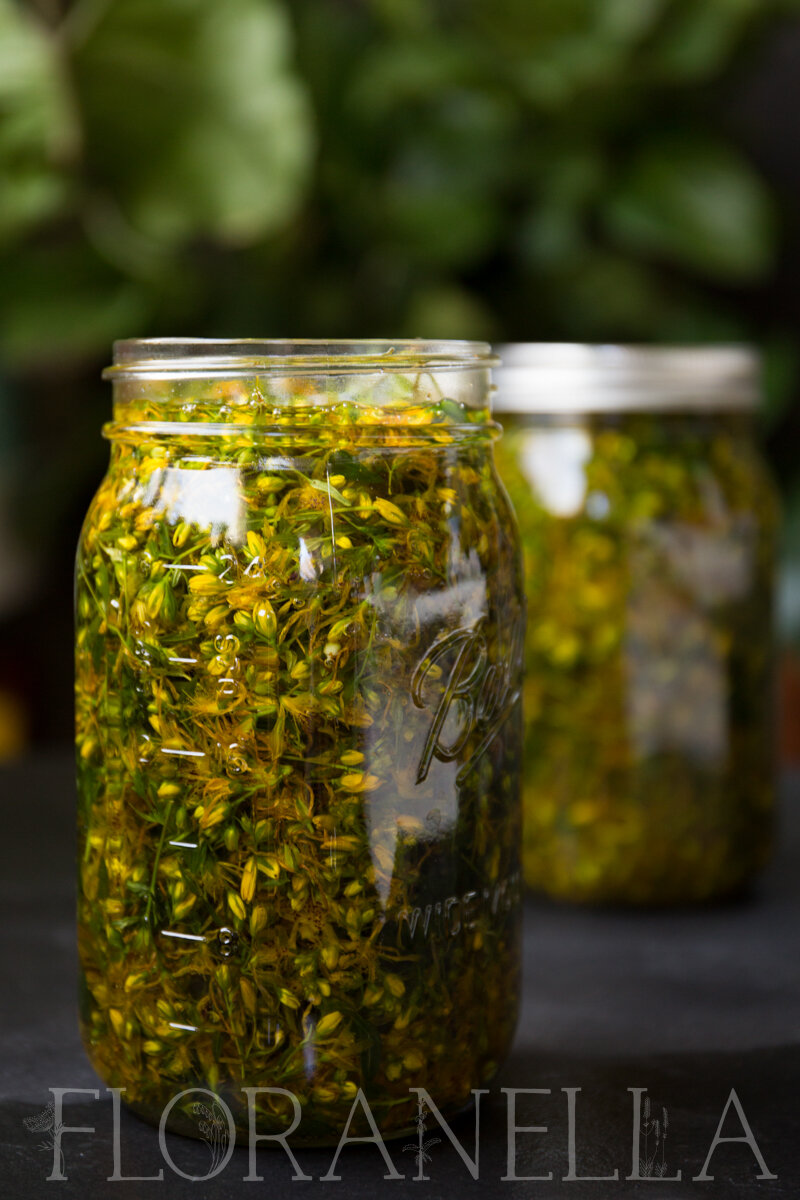How to Make (and Customize) Your Own Trauma Oil
Trauma oil is an herb-infused carrier oil that is often used as a base for herbal products and aromatherapy blends that are formulated to help soothe the skin, reduce inflammation, ease pain, and aid recovery from injury. It can also be used on its own and is highly customizable. Whilst premade trauma oil is commercially available, I have found that my handmade versions are often more effective than store-bought, so I prefer to make my own.
The Classic Combination
The classic recipe for trauma oil calls for equal parts St. John’s wort-infused olive oil, calendula-infused olive oil, and arnica-infused oil. The calendula and arnica oils can be made with dried plant material, but the St. John’s wort oil needs to be made with freshly harvested flowering tops of the St. John’s wort plant picked at just the right moment when the buds stain the fingers.
To make your trauma oil, you would infuse each of these herbal oils (click on this link to learn how to do that) separately for 4-6 weeks, strain out the plant material, and bottle the finished oils. You could then combine them in equal parts to create your trauma oil.
To customize your trauma oil recipe, you could add in other herb-infused oils that are helpful when you are dealing with pain and inflammation in the muscles and joints. Herb-infused oils that I like to add in different formulas include:
rosemary-infused oil (muscle aches and pains)
yarrow-infused oil (muscle pain and wounds)
self heal-infused oil (skin issues and lymph)
cayenne-infused oil (nerve pain; to enhance circulation)
pine, spruce, or fir-infused oil (muscle aches and pains)
chamomile-infused oil (tension, spasms, skin inflammation)
lavender-infused oil (skin irritation and inflammation)
I also like to change up the classic recipe a bit by using organic sunflower seed oil instead of olive oil. It gives me a lighter base to work with when I am blending.
Trauma oil makes a wonderful base for massage oils (it is effective with or without essential oils), salves, balms, ointments, lotions, creams, and butters. You can also double or triple infuse the individual oils in it to make an extra potent trauma oil.
I would love to hear how you end up tailoring the classic trauma oil recipe to better suit your needs. Is there an herb that you think would make a great addition to a trauma oil blend that I did not mention? Tell me about how and why you would include it in the comment section at the end of this article. I would love to hear from you.
Much love,
Erin
About the Author
Hi there, I’m Erin! I am the main instructor here at Floranella. I am a clinical herbalist, aromatherapist, artisan distiller and organic gardener based in the Pacific Northwest. Here at Floranella, I teach people how to work with plants safely and effectively from the garden to the apothecary. Thanks for being here! I’m glad you stopped by.




